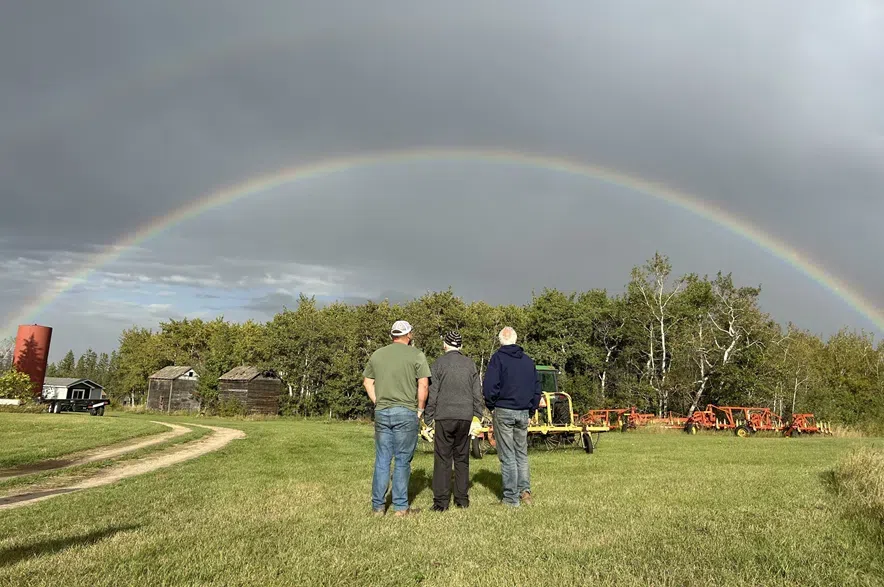Rain that doused a large portion of the province over the past week provided a glimmer of hope to many Saskatchewan producers who have been struggling with dry conditions this season.
According to the weekly crop report from the Saskatchewan Ministry of Agriculture, which covered the week ending on Monday, the rainfall was a positive sign for many producers, though it came too late in some regions.
Read more:
- Addressing farmers’ concerns can’t be done without the feds: Agriculture Minister
- Saskatchewan farmers receive boost in 2025 AgriStability support
- Despite recent rain, southwest Saskatchewan still short on moisture
“In some areas, the rain came just in time to carry crops forward through flowering and grain fill, while in other areas the rain came too late to make a difference to crops or pastures,” the report explained.
“For areas that received precipitation, producers are hopeful pasture grass recovers from grazing and stress from dry conditions. In areas where heavy rain was received, livestock water sources should see some replenishment, reducing the need to haul water for livestock.”
Farmers in the Eston area reported the highest rainfall totals during the week ending on Monday, with 83 millimetres. Bethune had the second-highest total, with 74 millimetres, followed by the Admiral area with 68 millimetres.
The cool weather and rain in the week covered by the report meant that topsoil moisture conditions improved across Saskatchewan.
For cropland, topsoil moisture was rated as two per cent surplus, 71 per cent adequate, 22 per cent short and five per cent very short. Hayland topsoil moisture was rated as one per cent surplus, 60 per cent adequate, 30 per cent short and nine per cent very short. In pastures, topsoil moisture was rated as 59 per cent adequate, 30 per cent short and 11 per cent very short.
“Crop development has leveled out closer to normal for the province, and crops should use the recent rain and cooler temperatures to develop at a regular pace rather than rush or delay development due to stress,” the ministry noted.
“Crop development varies from region to region, with drier areas showing the most accelerated crop development.”
While the rain was a boon to many producers, the ministry noted that the precipitation also slowed down haying operations, which are nearly complete across the province. Nine per cent of the hay crop was rated excellent, while 55 per cent was rated good, 31 per cent was fair and five per cent was poor.
While the rain may help take some crops over the finish line, the ministry said producers are reporting that crops are still showing damage and stress as a result of the drought-like conditions seen in many parts of the province during the earlier parts of the growing season. Meanwhile, gophers and grasshoppers are causing additional damage, while some crops ended up with flooding as low spots in fields filled up with rainwater.
“The rain and strong winds have led to cereal crops lodging across many regions, and producers are hopeful the damage is minor and their crops can recover in time for harvest,” the ministry added.
Some producers are beginning to get their equipment ready for harvest, and the ministry reminded them to ensure safety is their top priority.
“Please remember to use every precaution available for fire prevention as the extremely dry conditions increase the risk of combine and grass fires,” the report noted.
The full version of the report can be found on the Government of Saskatchewan’s website.











